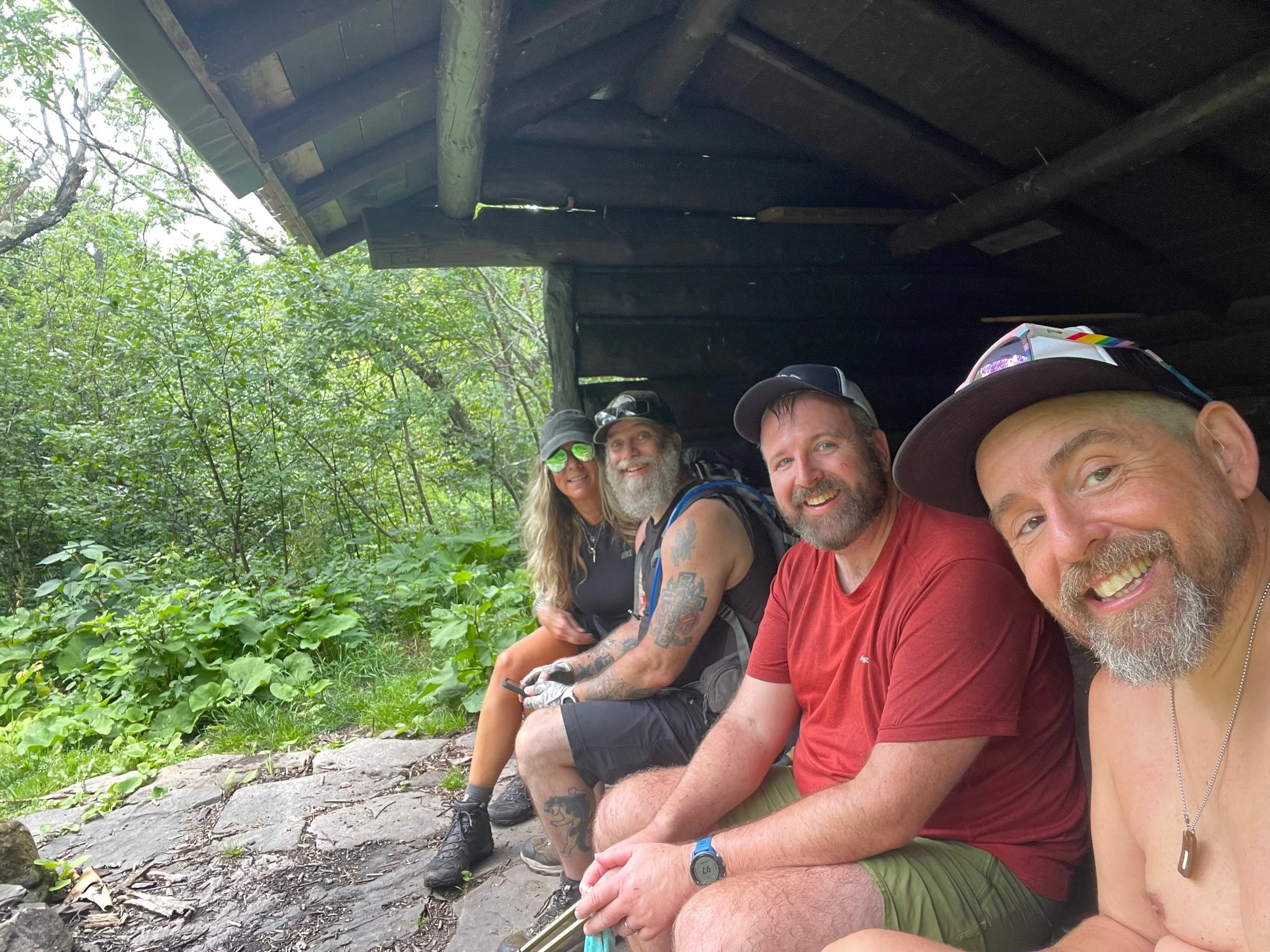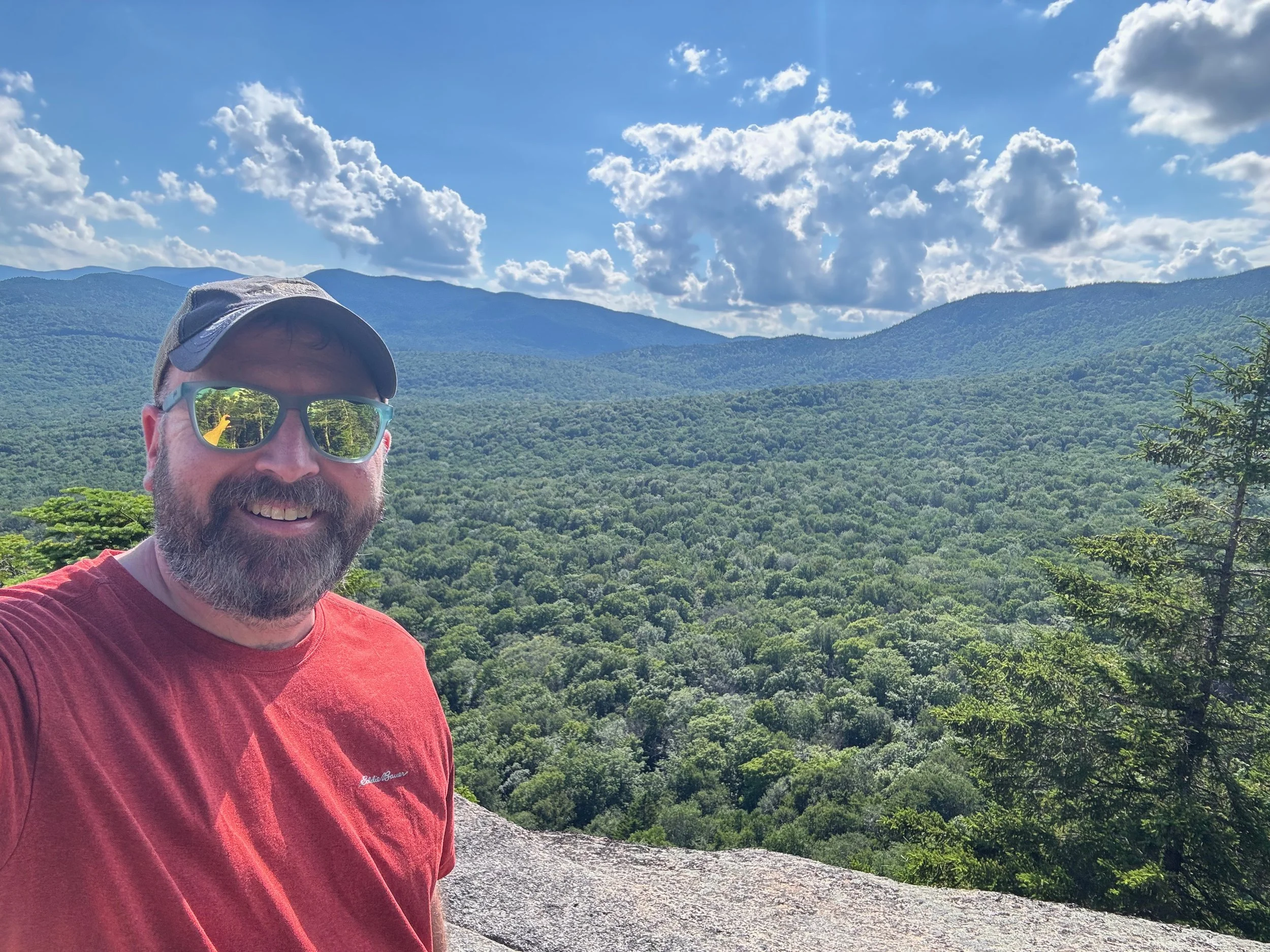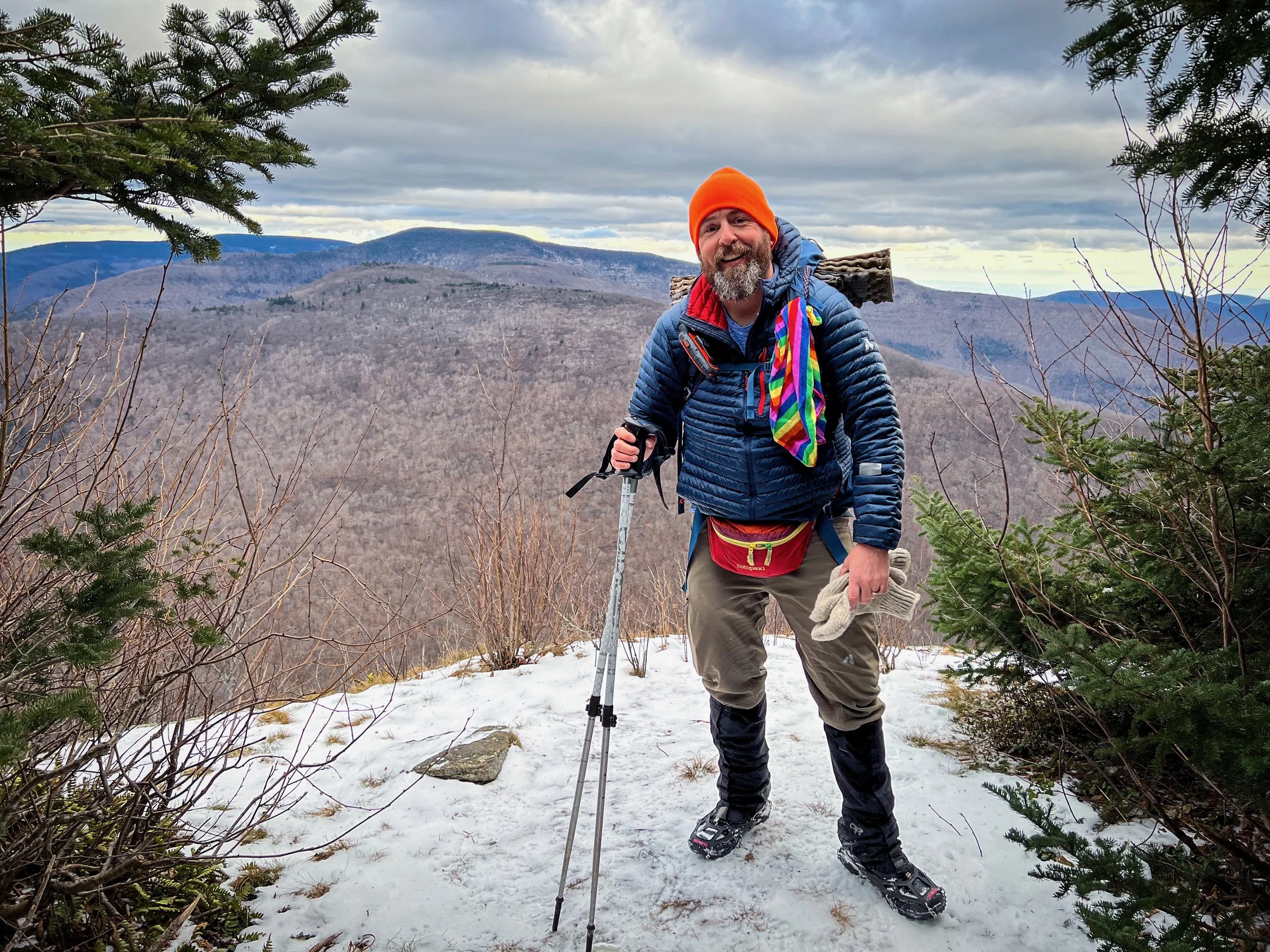Bushwhacking the lost logging railroad of the Catskills up Southwest Hunter
Bushwhack Southwest Hunter via Fenwick Railroad | Catskill 3500
Explore Southwest Hunter via the abandoned Fenwick Railroad grade. A challenging bushwhack through Catskill 3500 terrain and remote forests.
Southwest Hunter, often referred to as Leavitt Peak, is one of the Catskill 3500 peaks and stands at an elevation of 3,740 feet. Unlike nearby Hunter Mountain, which is the second-highest in the Catskills, Southwest Hunter is lower, and much less frequently visited. The peak is densely forested, offering no views compared to Hunter Mountain next door with its many views and Fire Tower. Reaching Southwest Hunter requires a bit of navigation, as there is no official trail to the summit. The typical route is via the Devil’s Path and then an unmarked but well-known and easy to follow herd path to the top.
“Trail” Guide
For our trip, we wanted to go the unconventional route and also finally get to see what used to be a logging railroad that ran up the side of the mountain. Our hike began in Lanesville, on the southern side of Stony Clove Notch and climbed up Myrtle Creek to the ruins of the old Fenwick Lumber Company mill, being careful to stay on the State Forest Preserve lands. From the ruins of the Fenwick mill, we followed the former cable railroad grade from the mill, to the notch between Southwest Hunter and Hunter Mountain, where the Devil's Acre Lean-to now sits and where the old Fenwick Lumber Camp used to be. From Devil's Acre Lean-to we followed the Devil's Path to the herd path to the summit of Southwest Hunter. On the return we hiked down the Devil's Path to Stony Clove Notch and then down Route 214 to our vehicles at Notch Inn Road.
Fenwick Lumber Company: The Fenwick Lumber Railroad was a short-lived logging railroad that operated on Hunter Mountain and Southwest Hunter in the early 20th century. It was built to support the Fenwick Lumber Company, which harvested timber in the dense forests of the two mountain tops. The railroad up the Myrtle Brook drainage was used to lower logs from the logging camp in the Devil's Acre area - which was a collection point of small narrow gauge railroads that harvested timber across the two mountains. After being brought down to the mill in Lanesville and milled, the lumber was then loaded on the Ulster and Delaware Railroad that passed through Lanesville and Stony Clove and took the wood south to New York City and beyond. Elaine Warfield has written a book about the Fenwick called The Fenwick Lumber Company in the Northern Catskills: Edgewood - Almost Forgotten: 1906-1917, which is well worth the read if you want to dive into even more detail about the old Fenwick Lumber Company’s operation on Hunter and Southwest Hunter.
For More Information about climbing Southwest Hunter via the Fenwick Railroad Grade
You can find out more about this this hike here:
Additional Catskill Park information is available at the Catskills Visitor Center (5096 Route 28 in Mt. Tremper) On the Web, Facebook, and Instagram.
Hike On Guides: Need help on a hike like this? Moe is a NYS licensed hiking and backpacking guide. You can hire him for Hiking, Backpacking and Camping Guide Services at Hike On Guides for hikes in New York, New Hampshire, Vermont, and Massachusetts.
Our Hiking Advice and Hiking Gear Recommendations
Gear we used on this hike:
Some product links are affiliate links and we earn from qualifying purchases. Others are links through the Amazon Influencer program and as an Amazon Influencer, we earn from qualifying purchases. Still others, we just want you to know about some good gear we enjoy!
Important Hiking Considerations:
Weather: Check the weather forecast before your hike and be prepared for changes in conditions.
Safety: Some sections of the trail can be steep and rocky, so use caution and watch your footing.
Leave No Trace: As with any outdoor activity, remember to follow the principles of Leave No Trace. Pack out any trash, stay on the trail, and be respectful of the natural environment.






